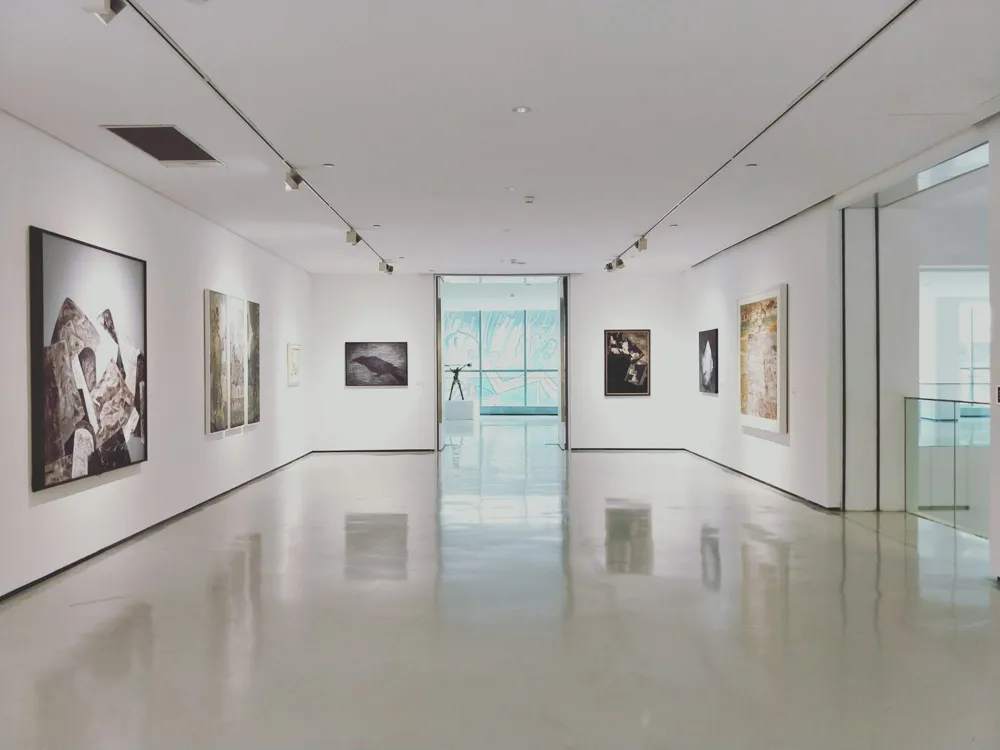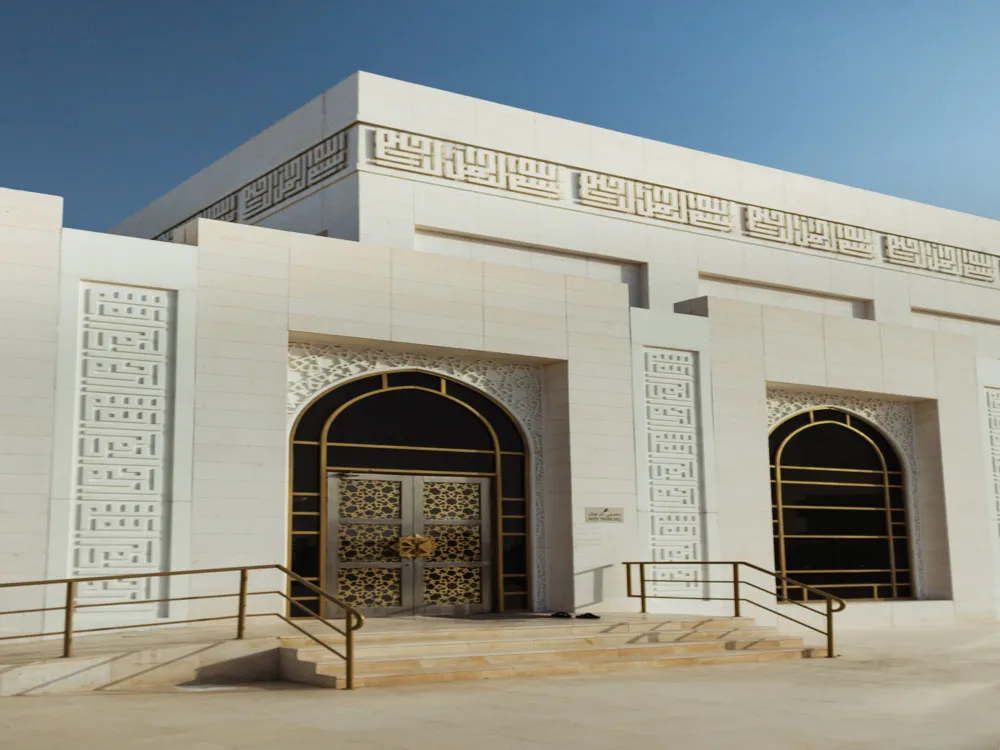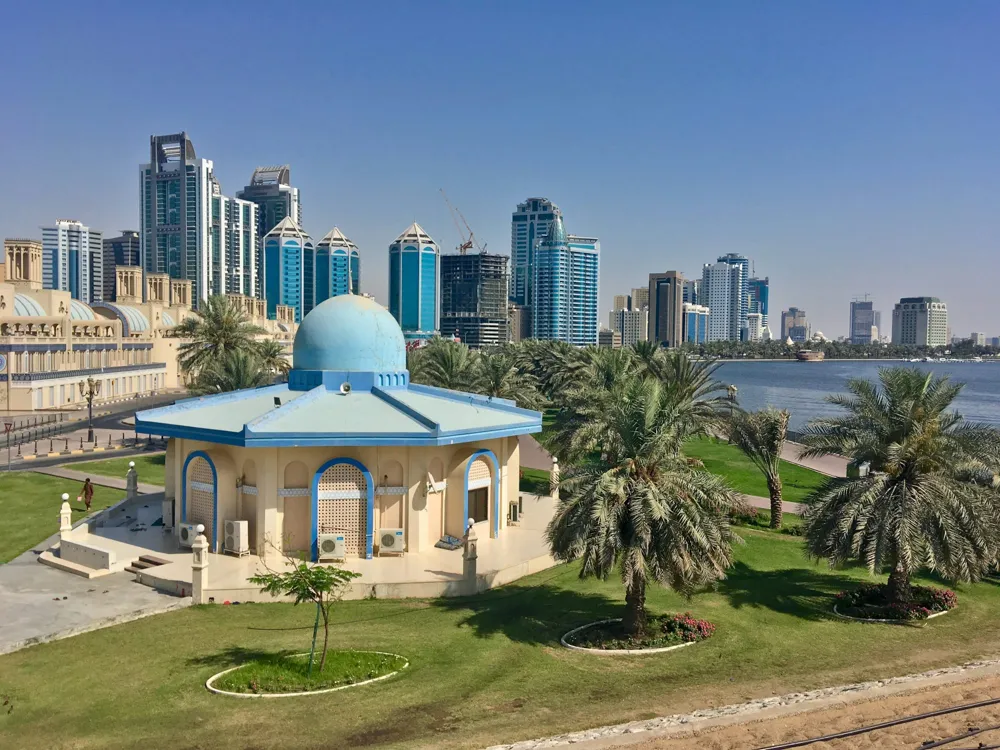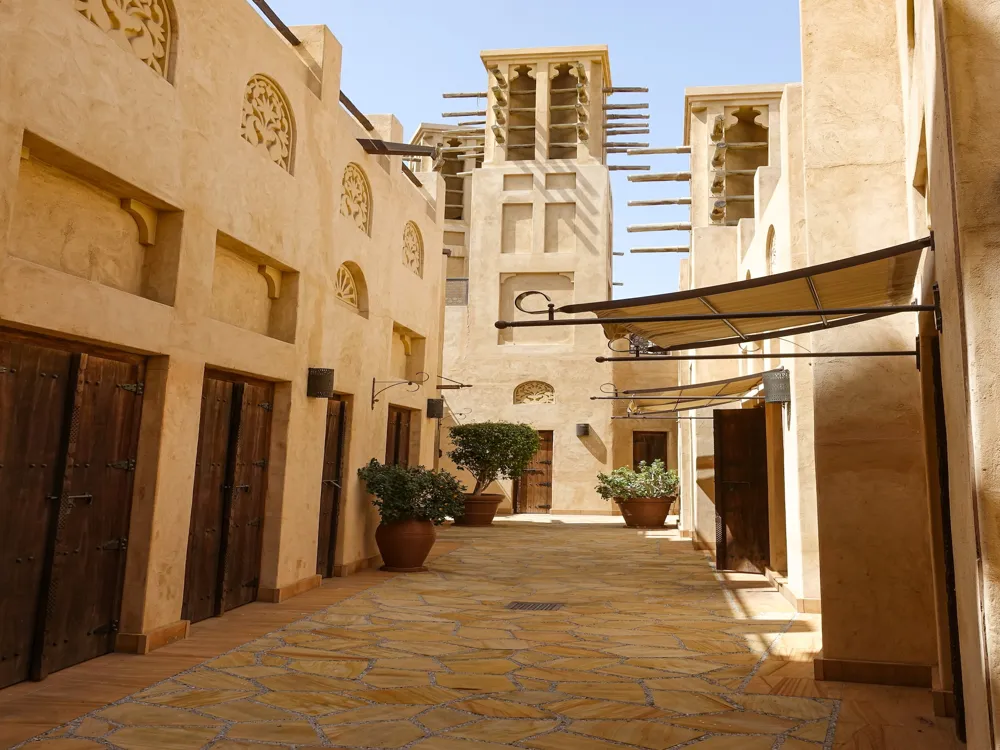The Dhow Yard in Ajman stands as a magnificent testament to the United Arab Emirates' rich maritime heritage. Located along the northern coast of the emirate, this yard is renowned for being one of the world's largest dhow-building centers. A dhow is a traditional wooden vessel, integral to the history of the Arabian Gulf, used for fishing, pearl diving, and trade. The Dhow Yard of Ajman not only preserves these historical vessels but also continues to build them using age-old techniques passed down through generations. The history of the Dhow Yard dates back several centuries, deeply intertwined with the region's maritime history. Dhows were pivotal in establishing trade routes between the Arabian Peninsula, India, and East Africa. In Ajman, dhow building emerged as a vital industry, contributing significantly to the emirate's economic development. The craftsmen here are known for their expertise in constructing various types of dhows, such as the 'Sambuk' and 'Shu'ai', each designed for specific purposes. Visiting the Dhow Yard offers a unique glimpse into the meticulous craftsmanship that goes into dhow making. The process involves selecting the right type of wood, usually teak or mahogany, shaping it, and assembling the parts without using modern machinery. This traditional method showcases the skills and dedication of the craftsmen, who work diligently to keep this age-old practice alive. The yard serves not only as a production site but also as a living museum, reflecting the enduring legacy of the UAE's maritime history. The architecture of the Dhow Yard in Ajman is a blend of traditional and modern elements, designed to facilitate the construction of dhows while preserving the authentic feel of a historical site. The yard's layout is strategically planned to accommodate the different stages of dhow building. There are specific areas for wood treatment, cutting, carving, and assembling, demonstrating a well-organized workflow that has evolved over the years. One of the striking features of the Dhow Yard's architecture is its open-air design. This not only allows for natural light and ventilation, crucial for the craftsmen working long hours, but also offers visitors an unobstructed view of the dhow-making process. The use of local materials in construction, such as coral stones and palm fronds, further adds to the yard's authentic ambiance. The Dhow Yard also includes a dedicated exhibition space, showcasing models of different types of dhows, tools used in their construction, and photographs documenting the history of dhow making in Ajman. This area is architecturally designed to be both informative and immersive, allowing visitors to engage with the region's maritime history in a meaningful way. The ideal time to visit the Dhow Yard is during the cooler months, from November to March. The weather is pleasant, making it more comfortable to explore the outdoor areas and watch the craftsmen at work. Visitors are advised to dress modestly, respecting the local culture. Lightweight clothing that covers shoulders and knees is recommended, along with comfortable walking shoes. Opting for a guided tour can enhance your experience, providing insights into the history and techniques of dhow making. Guides are usually available on-site. The Dhow Yard of Ajman is easily accessible by various means of transportation. Visitors can reach the site by car, as it is well-connected by major roads and highways. Public transportation options include buses and taxis, which are readily available from different parts of Ajman and neighboring emirates. For a more scenic route, one can opt for a water taxi or ferry from Dubai, offering a picturesque view of the Gulf coast. Read More:Overview of Dhow Yard of Ajman
Architecture of Dhow Yard
Tips When Visiting Dhow Yard
Best Time to Visit
Dress Code and Etiquette
Guided Tours
How to Reach Dhow Yard
Dhow Yard
Ajman
NaN onwards
View ajman Packages
Weather :
Tags : Waterfront
Timings : Anytime
Entry Fee : Free
Planning a Trip? Ask Your Question
Ajman Travel Packages
View All Packages For Ajman
Top Hotel Collections for Ajman

Private Pool

Luxury Hotels

5-Star Hotels

Pet Friendly
Top Hotels Near Ajman
Other Top Ranking Places In Ajman
View All Places To Visit In ajman
Faq on Ajman
What is Dhow Yard Ajman?
Dhow Yard Ajman is a traditional boat-building yard located in Ajman, United Arab Emirates, where skilled craftsmen construct and repair dhows, traditional wooden sailing vessels.
Where is Dhow Yard Ajman located?
Dhow Yard Ajman is situated in the emirate of Ajman, one of the seven emirates in the United Arab Emirates, specifically in the city of Ajman.
What types of dhows are built at Dhow Yard Ajman?
Dhow Yard Ajman specializes in building various types of dhows, including the traditional wooden cargo dhows, passenger dhows, and luxury yachts.
Can visitors tour Dhow Yard Ajman?
Yes, visitors can often tour Dhow Yard Ajman to witness the traditional boat-building process and learn about the maritime heritage of the region.
Is Dhow Yard Ajman open to the public?
While Dhow Yard Ajman is primarily a working shipyard, arrangements can sometimes be made for public tours or visits, though it's recommended to inquire in advance.
View ajman Packages
Weather :
Tags : Waterfront
Timings : Anytime
Entry Fee : Free
Planning a Trip? Ask Your Question
Ajman Travel Packages
View All Packages For Ajman
Top Hotel Collections for Ajman

Private Pool

Luxury Hotels

5-Star Hotels

Pet Friendly
Top Hotels Near Ajman
Other Top Ranking Places In Ajman
Faq on Ajman
What is Dhow Yard Ajman?
Dhow Yard Ajman is a traditional boat-building yard located in Ajman, United Arab Emirates, where skilled craftsmen construct and repair dhows, traditional wooden sailing vessels.
Where is Dhow Yard Ajman located?
Dhow Yard Ajman is situated in the emirate of Ajman, one of the seven emirates in the United Arab Emirates, specifically in the city of Ajman.
What types of dhows are built at Dhow Yard Ajman?
Dhow Yard Ajman specializes in building various types of dhows, including the traditional wooden cargo dhows, passenger dhows, and luxury yachts.
Can visitors tour Dhow Yard Ajman?
Yes, visitors can often tour Dhow Yard Ajman to witness the traditional boat-building process and learn about the maritime heritage of the region.
Is Dhow Yard Ajman open to the public?
While Dhow Yard Ajman is primarily a working shipyard, arrangements can sometimes be made for public tours or visits, though it's recommended to inquire in advance.






















